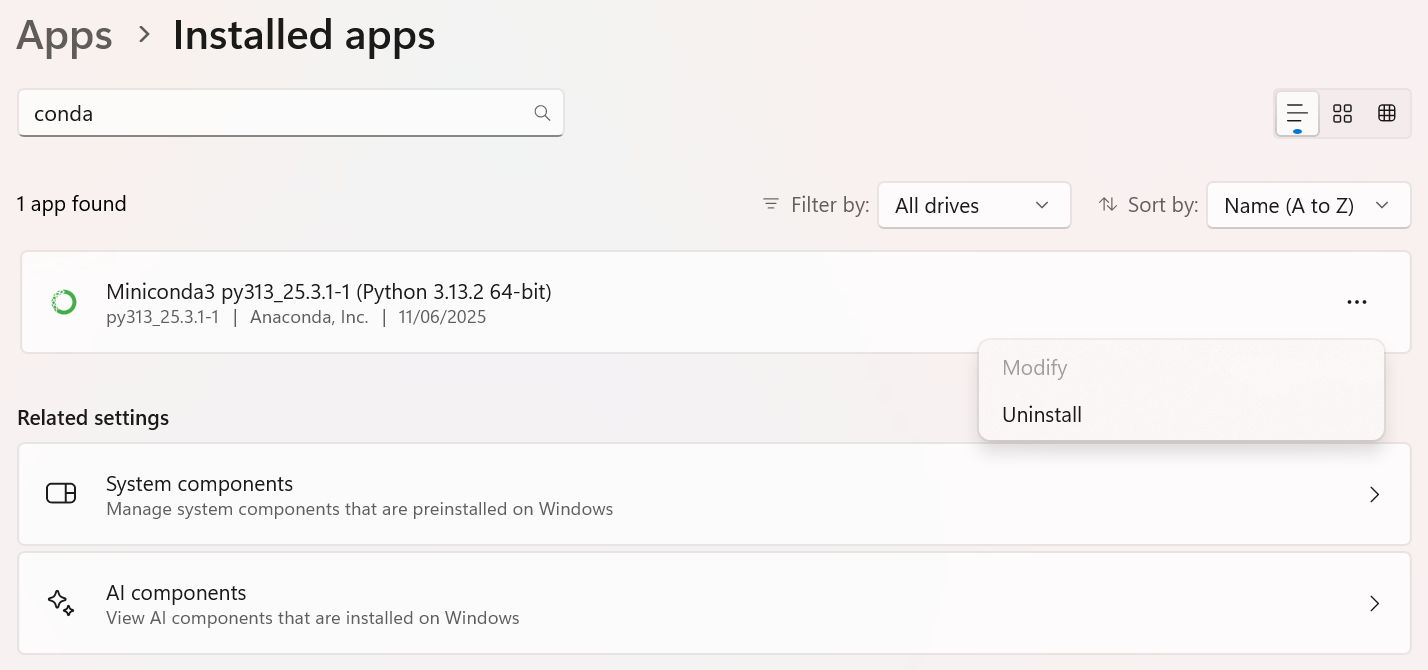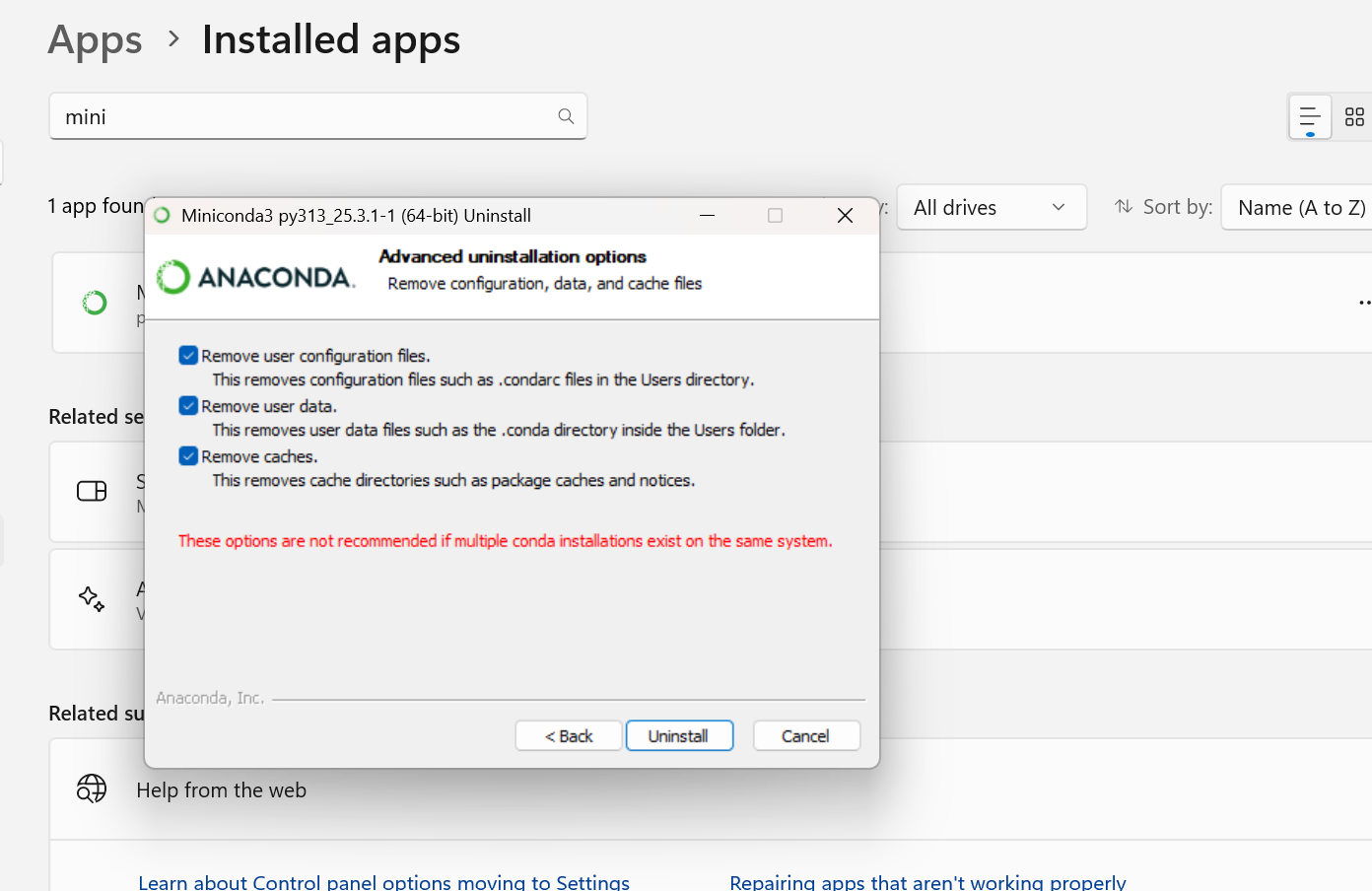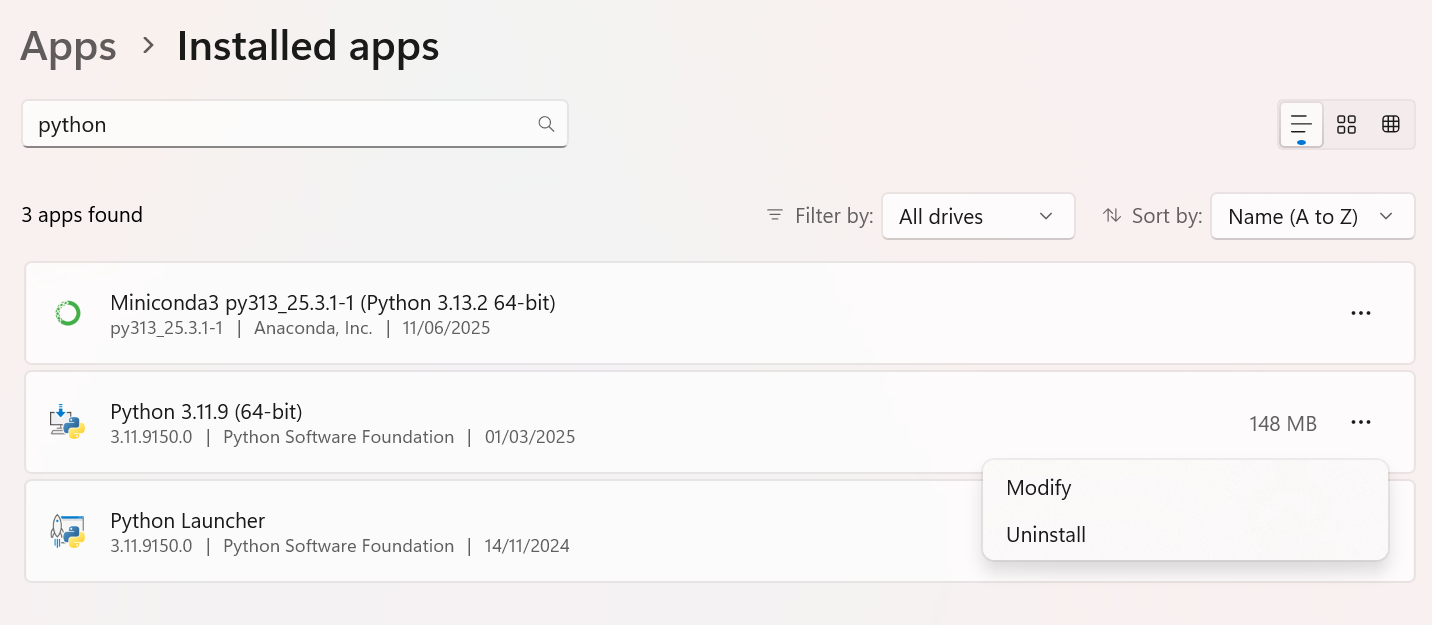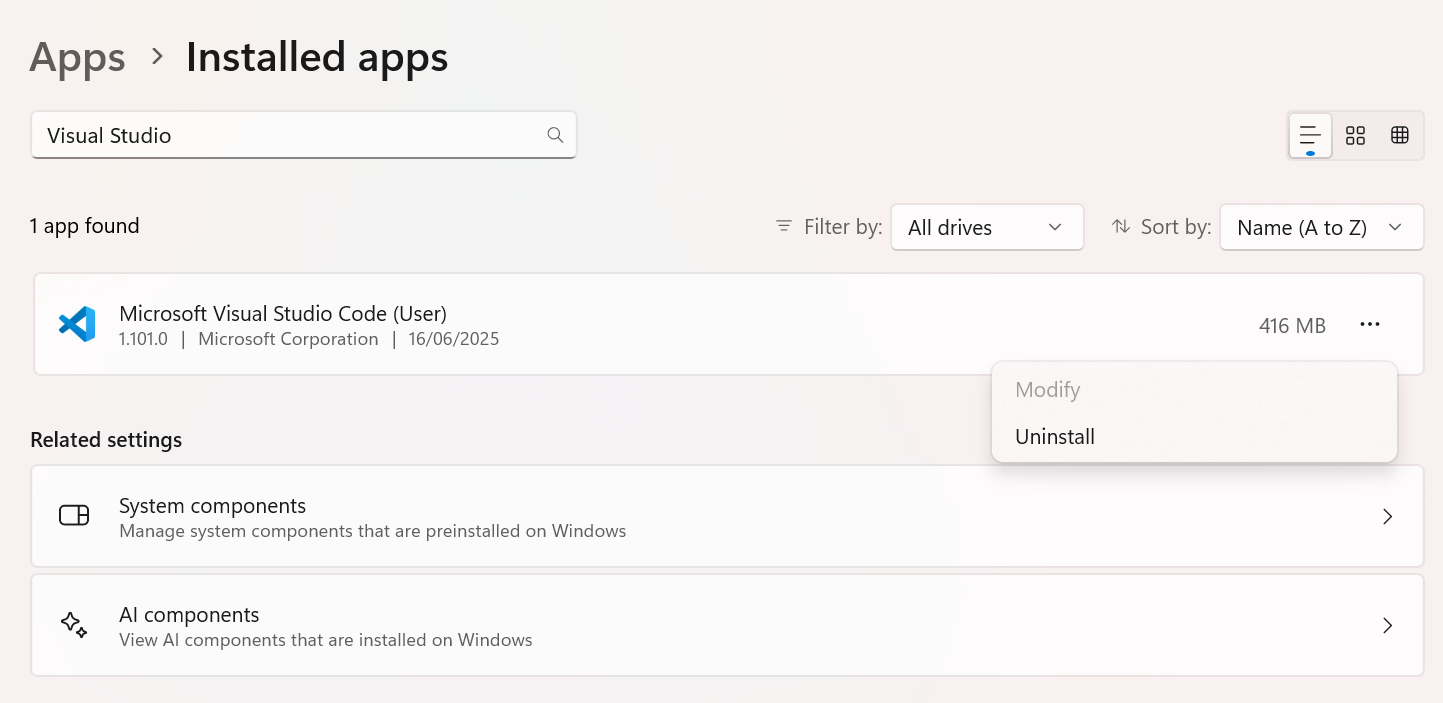Uninstall Software#
In some cases, removing Python or an editor is necessary. Here you will find guides on how to uninstall Conda, Python and Visual Studio Code.
If you experience hard-to-resolve problems, it might be because you have
installed all packages in your global Python home (i.e. using pip
in your base installation, not in a virtual environment).
If this is the case, you are recommended to delete your installation,
and when using a new one, please remember to use environments.
Uninstalling Conda
This guide will help you uninstall Conda from your computer. This can be useful if:
You are trying to install packages with pip, but cannot import the package.
You want to change to use pip.
You have issues with packages.
You already have the Anaconda distribution installed, but need to switch to Miniconda.
Ensure all shells, command prompts are closed i.e. make sure no files related to Anaconda/Miniconda are open anywhere.
In the
Searchtab, search for .Search for conda, click the three dots on the right hand side and click
UninstallIf you want to completely get rid of everything related to conda, make sure to tick off all the boxes in the last step of the uninstaller as shown below:
This guide will help you uninstall Conda from your computer. This can be useful if:
You are trying to install packages with pip, but cannot import the package.
You want to change to use pip.
You have issues with packages.
You already have the Anaconda distribution installed, but need to switch to Miniconda.
If you have installed Miniconda through Homebrew, run the following command line in the terminal:
brew remove miniconda
Tip
If you are unsure how you installed Miniconda, you can check by running the following command in your terminal. If the command returns
miniconda, it confirms that it was installed via Homebrew:brew list | grep miniconda
If you did not install Miniconda through Homebrew, you can remove it by running the following commands in your terminal:
conda activate conda init --reverse --all cd sudo rm -rf ~/miniconda3 sudo rm -rf /opt/miniconda3
If you want to uninstall Anaconda, run the following commands in your terminal:
conda activate conda init --reverse --all cd sudo rm -rf ~/anaconda3 sudo rm -rf /opt/anaconda3
Uninstalling Python
Note
If you are running Python using Miniconda, you will have to uninstall Miniconda.
Deleting Python might be helpful in the following scenarios.
Your current Python installation is not working correctly.
You have several versions of Python that conflict with each other.
You have tried to install Python, but something went wrong, and you want to start from scratch.
Follow the steps below to delete Python.
In the
Searchtab, search for .Search for Python, click the three dots on the right hand side, and press
UninstallFollow the instructions from the uninstaller
Repeat for every version of Python that you see in
Note
If you are running Python using Miniconda, you will have to uninstall Miniconda.
Deleting Python might be helpful in the following scenarios.
Your current Python installation is not working correctly.
You have several versions of Python that conflict with each other.
You have tried to install Python, but something went wrong, and you want to start from scratch.
Follow the steps below to delete Python.
A version of Python comes pre-installed with MacOS. The operating system uses this version of Python and should not be deleted. Other versions of Python may be deleted using a script supplied here. This may include versions installed from the official Python website, Anaconda or Miniconda.
The deletion script can be downloaded here.
Be sure to place the downloaded script on your Desktop.
Once you have downloaded and placed it on the Desktop, open a terminal (Command+Space, then type terminal Enter).
Then run the following command by copying, pasting into your terminal, and pressing Enter:
cd ~/Desktop
bash deletePythonMac.sh
The script will ask you for your system password. Enter it and press Enter (You will not be able to see your password as you type it). The script will then delete all versions of Python that you have installed on your computer.
Warning
This will delete all versions of Python installed on your computer,
including packages installed using pip or conda install.
Uninstalling Visual Studio Code
This guide will help you uninstall Visual Studio Code from your computer. This can be useful if Visual Studio Code is not working correctly and you want a fresh start.
Video Guide — description found below
In the
Searchtab, search for .Search for Visual Studio Code
Press the three dots on the right hand side, click
Uninstalland follow the instructions.
Note
This will leave behind some files, which you can delete manually if you want to. To do this follow the steps below. This is recommended if you are trying to fix an issue with Visual Studio Code by uninstalling and reinstalling.
Press the button and R at the same time
Type in
%appdata%and press Enter.Find the folder named
Codeand delete it.Press the button and R at the same time
Type in
%userprofile%and press Enter.Find the folder named
.vscodeand delete it.
This guide will help you uninstall Visual Studio Code from your computer. This can be useful if Visual Studio Code is not working correctly and you want a fresh start.
Open Finder
Open the Apps folder
Find the Visual Studio Code App, right click and select move to
Open Trash and press in the top right hand corner.
Note
This will leave behind some files, which you can delete manually if you want to. To do this follow the steps below.
Open up a terminal and run the following command:
rm -rf ~/.vscode
rm -rf "~/Library/Application Support/Code"



